Spain is famous for its history, food, art, music, and amazing structures among many other cultural achievements.
With centuries of ethnic groups crossing and settling in the country, Spain absorbed the various cultures and merged them into one rich and diverse cultural experiment.
I asked Spain aficionados what THEY think Spain is famous for and what impressed them most about this fascinating country.
Some responses are very familiar but others will surprise you. Read on to learn the remarkable things Spain is famous for.
What Spain is Famous for
City of Arts and Science in Valencia
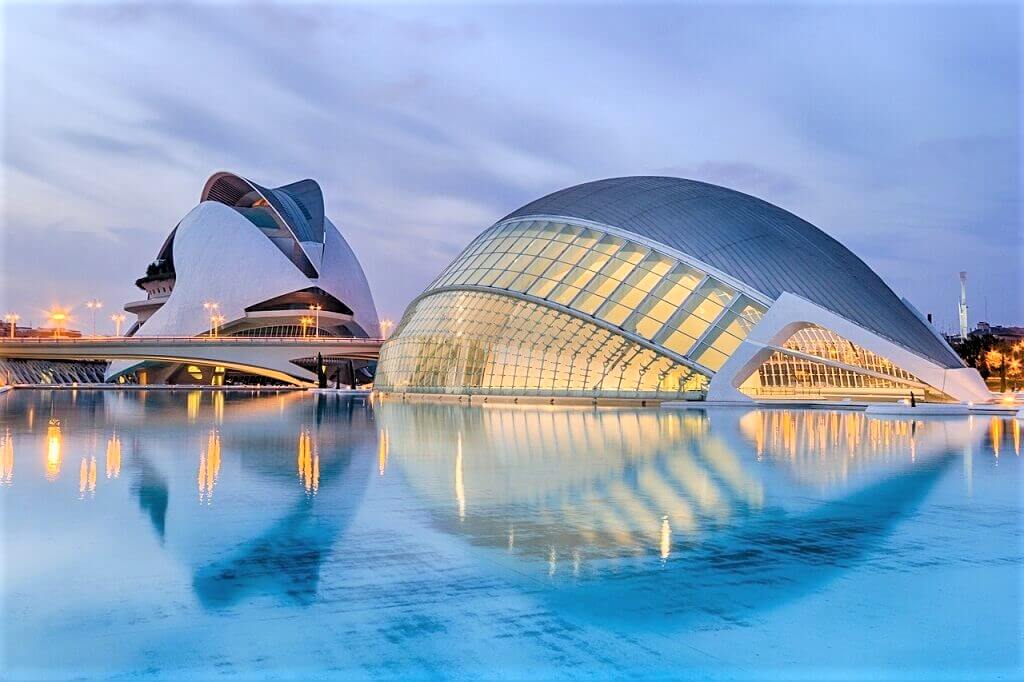
Spain is famous as a country of contrasts. and Valencia is a prime example of a city of contrasts. Founded by the Romans in the 2nd century BCE, it is one of the oldest towns in Spain.
It is also home to one of the most modern cultural complexes on the continent, The City of Arts and Science.
The City of Arts and Sciences is a cultural and architectural center in Valencia designed by Santiago Calatrava and Felix Candela.
It is built on the diverted Turia riverbed and surrounded by beautifully landscaped grounds, soaring bridges and unique restaurants.
The center consists of L’Oceanografic, an aquarium with an underwater tunnel; The Prince Felipe Museum of Science, an interactive museum for all ages; L’Hemisferic an IMAX theater, The Queen Sofia Palace of Arts Performance Center and L’Agora, a convention center.
Depending on your level of interest in the arts and sciences, you could spend anywhere from a couple of hours to several days exploring this area.
The City of Arts and Science is unique and is certainly a remarkable achievement that Spain is famous for.
REGIONAL FIESTAS (FESTIVALS) IN BAIONA, GALICIA
What is Spain famous for? It’s Fiestas (Festivals) are a main reason to visit, but Spain is also renowned for its great food & wines, beaches, and laid-back lifestyle!
The most popular Fiestas in Baiona are truly spectacular. We recommended a very special festival held every year in the picturesque coastal towns of Baiona in Galicia, north-western Spain.
Baiona is a seaside town situated alongside a spectacular bay, with cobblestone streets, a stunning fortress (the old fortress of Monterreal), and colourful small fishing boats at the picturesque port.
This is a very scenic town with many local festivals. The most popular event is the “Festa da Arribada,” which commemorates the arrival of the ship Caravel La Pinta with news of the discovery of America on March 1st, 1493.
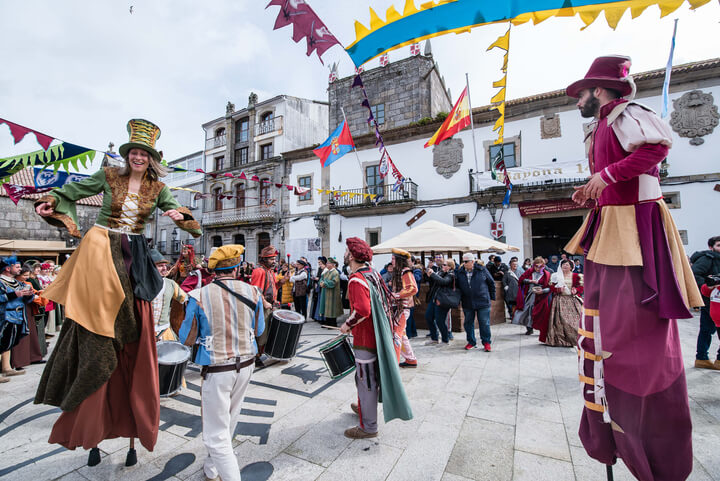
It is a festival of international tourist interest that takes place every year on the first weekend of March organized by the town council of Baiona.
Other festivals in Baiona worth checking out are Fiesta de la Virgen del Carmen (Festival of the Virgin of Carmen), Fiestas de Semana Santa de Baiona (Easter Holy Week festivities in Baiona) or Romeria de la Virgen de la Roca (Pilgrimage of the Virgin of the Rock).
The best place to stay in Baiona is the Parador de Baiona. This is a renovated ancient fortress built into a promontory that juts out into the Atlantic Ocean.
And don’t forget to visit the Tourism Office of Baiona to learn all the amazing things to do in Baiona.
Tomb of Christopher Columbus
You’d be hard-pushed to have never heard of Christopher Columbus. The famous Italian explorer is widely credited with the discovery of the Americas in 1492.
Although he was born in Genoa, Italy, in 1451, his resting place is actually in Seville, Spain.

The discovery of the Americas was pivotal in Spain’s advancement. The wealth (in precious metals, artifacts and produce) is what gained Spain its affluence.
The Archivo de Indias, which is located in Seville’s historical center, documents these voyages. Christopher Columbus is so important to Spain that on October 12th every year they celebrate the National Day of Spain which commemorates his discovery of The Americas in 1492.
If you’re planning a trip to Spain, then be sure to add Seville to your itinerary. Not only does it have a wealth of history, and a stunning UNESCO-listed city center, but it’s also home to the tomb of Christopher Columbus.
It resides in Seville Cathedral, which is also the world’s biggest cathedral by volume.
The gigantic structure sits in the heart of the historical center and dominates the Seville skyline. Previously, during the reign of the Arabs, a mosque stood on this site.
When Seville was conquered by the Christians in 1248, the building was converted into a Gothic-Style Roman Catholic church, and it was completed in 1506.
A couple of relics still remain from the Moorish era including the orangery courtyard and the impressive Giralda.
Camino de Santiago
The movie, The Way, by Emilio Estevez made Camino de Santiago famous around the globe in the 20th century.
The iconic Camino de Santiago (Way of St James) in Spain is one of the most famous hiking trails and pilgrimage routes.
The Way of St James is a net of routes across Spain and Europe that lead to the tomb of St James the Apostle in the Cathedral of Santiago de Compostela in Spain.
It is an ancient Christian pilgrimage route dating back to the 9th century when the tomb of St James was discovered in Santiago de Compostela and when the first pilgrims started journeying.
There are several popular Camino routes. But Camino Frances (the French Way), which starts in St. Jean Pied de Port in France, and Camino Portuguese (The Portuguese Way), which goes from Lisbon in Portugal, are the most popular.
All Camino routes end at the same place – Santiago de Compostela Cathedral. However, many Camino pilgrims continue their journey from Santiago de Compostela to Finisterre on the Atlantic coast.
The Romans, who inhabited the area for over 600 years, believed that Finisterre was the end of the world.
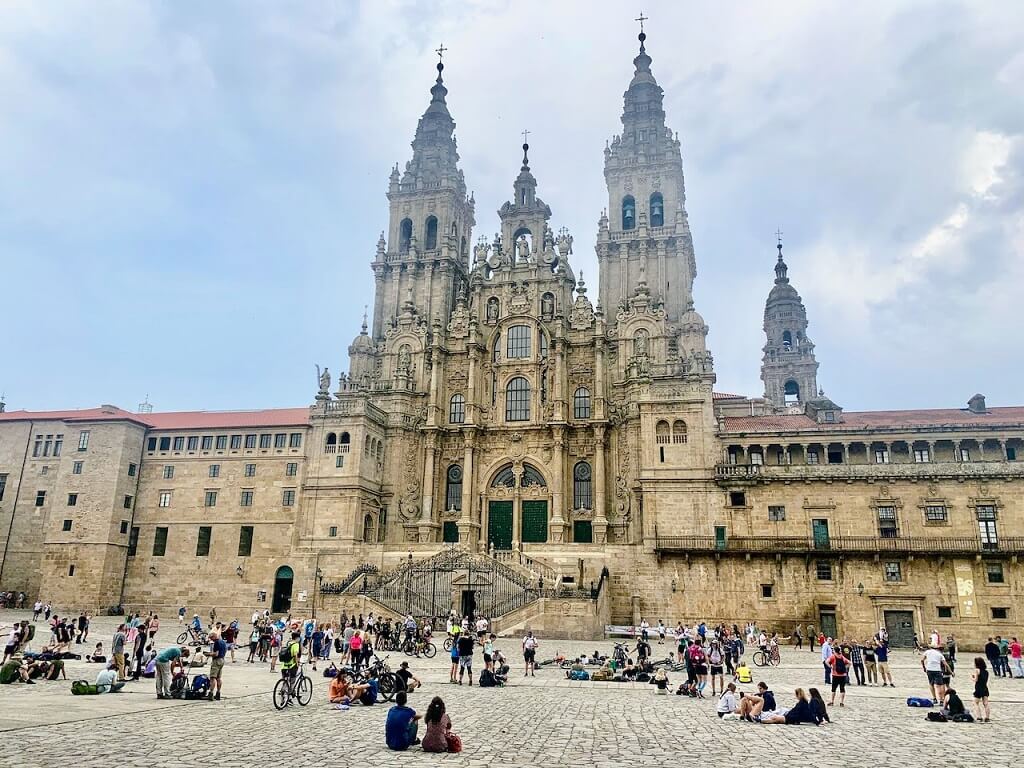
The Camino hike can last from several days to one or even two months.
Today Camino de Santiago is one of the most famous long-distance hiking trails around the globe.
Not only religious and spiritual people hike Camino de Santiago but also experienced long-distance trekkers, people who enjoy active vacations, and people who want to unwind from their busy life.
Regardless of the motivation, hiking Camino de Santiago is a must-do once in a lifetime.
Camino routes take pilgrims across stunning landscapes (woods, cliffs, beaches, vineyards, meadows, etc.), lovely cities, charming villages, medieval towns, medieval forts, churches, and monasteries.
So, prepare your Camino de Santiago packing list, hike the Camino and have the adventure of your life!
When you finish the Camino, check out the best places to stay in Santiago de Compostela.
READ NEXT: How an intrepid woman conquered the Santiago de Compostela trail and what she experienced. Walking the Camino: One Woman’s Story.
Sangria
The beverage’s name, which derives from the Spanish word for blood is a unique beverage and one of the best products Spain is famous for Sangria, which consists of red wine, soda water, and fruits is also a popular souvenir that tourists bring very often from Spain.
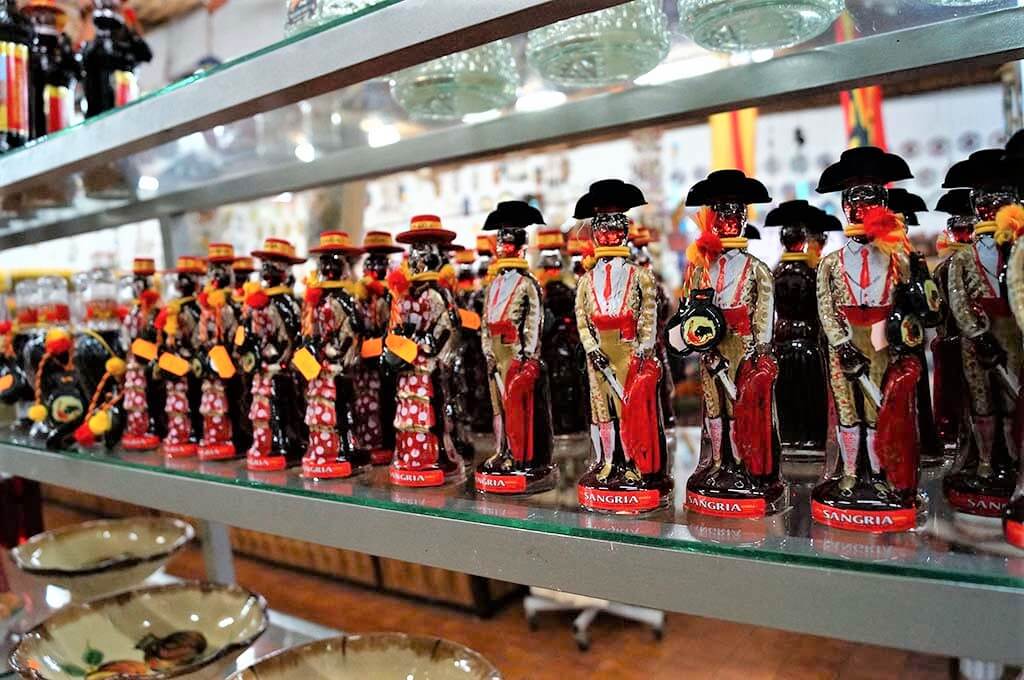
Some of the best Sangrias can be found in Barcelona or Mallorca. This traditional Spanish beverage is often mixed with fruits like apples, peaches, or pears.
Moreover, several recipes for sangria may also include flavored liqueurs.
The popularity of Sangria resulted in the production of similar products in several countries. However, in the European Union, only Sangria from Spain and Portugal may keep its name.
It simply illustrates how distinctive a beverage it is in those regions.
The history of sangria dates back to the Middle Ages when drinking water was not safe. During those times sangria became one of the most popular refreshing drinks in Spain.
So don’t forget to try this delightful alcoholic beverage during your visit to this beautiful country.
Sangria served with famous dishes such as paella is a great way to taste traditional Spanish cuisine. Furthermore, Sangria is also easy to prepare at home so if you miss Spain after your trip, buy some fruits and wine to relax in a true Spanish way!
Plaza Mayor
Plaza Mayor located in the Spanish capital of Madrid is one of the most popular landmarks and meeting places that can be found in the city. It is also one of the largest public squares in Europe.
Thousands of people arriving in Madrid each day pass through one of its many entrances at least once while exploring the city.
Originally designed by the outstanding Spanish architect Juan de Herrera, Plaza Mayor was not only a thriving market but the place where public executions took place during the Spanish Inquisition.
Today, Playa Mayor is one of the safest places to visit in Madrid and is open for everyone to walk around freely.
During the day, this landmark features some of Spain’s best street performers who perform unique acts such as fire breathing, juggling and human statues.
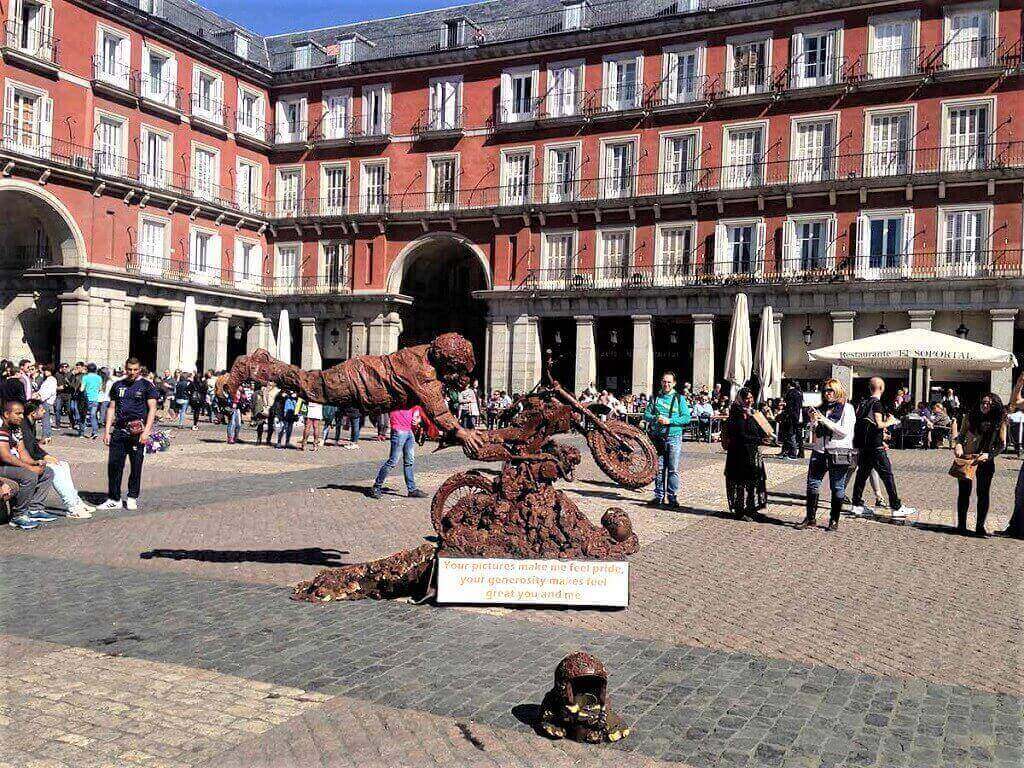
This landmark also makes the perfect place to stop during a day trip as there are many traditional restaurants lining the square’s perimeter that offer deals specifically aimed at tourists.
Anyone who wants to visit this landmark and fully appreciate its architectural structure and stay as close as possible can get a room at the Pestana Plaza Mayor which offers suites that face the square.
The Alhambra
Spain is famous for its architecture and one of the most famous and beautiful is The Alhambra. Located in Granada, it is one of the most visited landmarks in Spain, and a UNESCO World Heritage Site.
This stunning palace complex is at the top of the itinerary for most visitors to Andalusia, in the south of Spain.
Construction started on the complex in the early 17th century, and modifications and additions continued beyond the Islamic times into the Christian era.
The most spectacular parts of the Alhambra complex are the Nasrid Palaces, with intricate architecture and tranquil courtyards. Admission is restricted to a time slot you must reserve in advance.
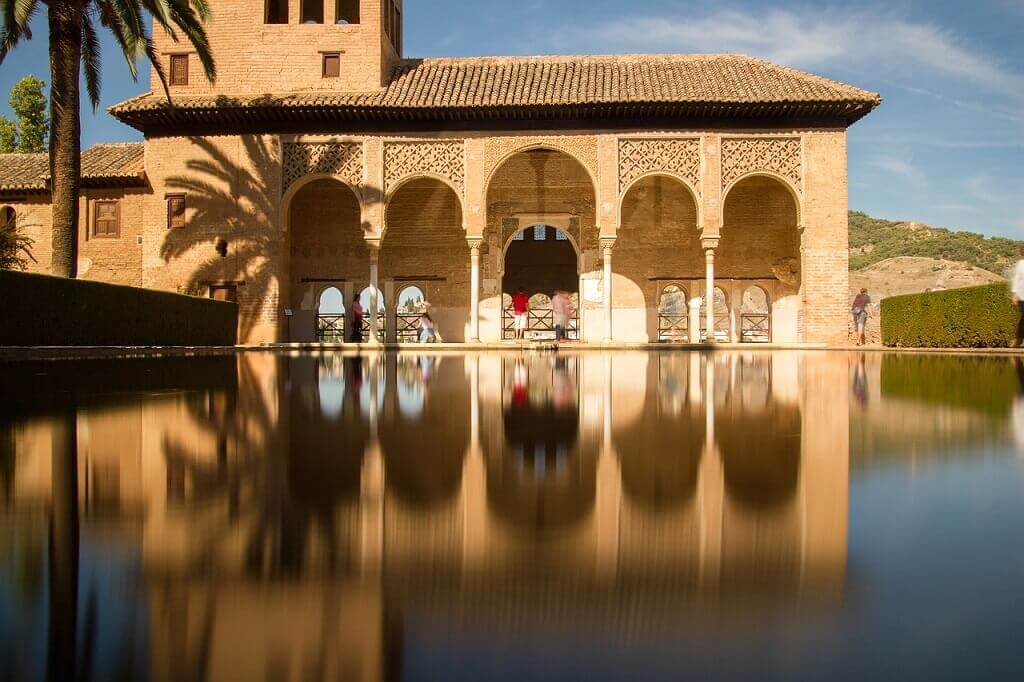
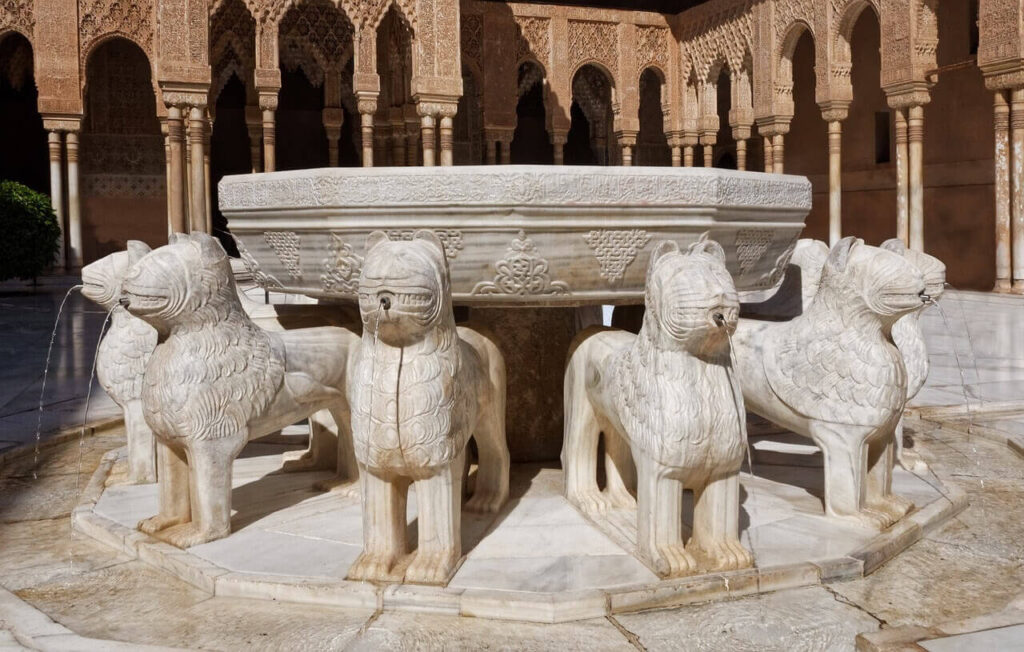
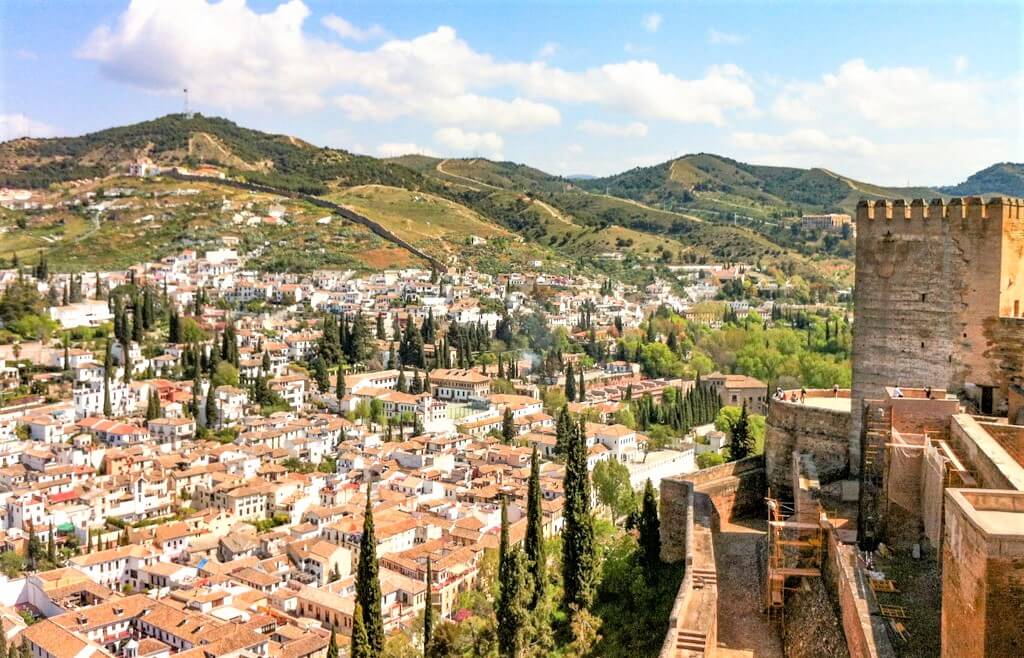
You will be left gaping as you walk through these palaces, with every inch of the walls covered in beautiful Islamic design, tile work, and more.
The Courtyard of the Lions is one of the most photographed parts of the Alhambra, with good reason!
You can wander the rest of the complex as long as you choose. The fortress offers expansive views over the Albayzin, a historic neighborhood in Granada.
The Generalife Gardens include many beautiful water features and lovely landscaping. The Charles V Renaissance-style palace is also a jaw-dropping part of the complex.
Allow plenty of time to explore the Alhambra, and reserve tickets well in advance of your visit (or book a guided tour).
One of the best places to stay in Granada is the Alhambra Palace Hotel, located close to the palace and offering views over the city.
Tapas
When it comes to Spain, the country’s most well-known contribution to world cuisine would have to be Tapas.
Tapas can be an appetizer, small plate, or complete meal depending on where you go in the country. But you can’t deny that it is part of the culture and experience of Spain.
When you travel to Spain you will quickly learn there are some significant differences from region to region, proper tapas etiquette, and local favorites.
Tapas come in a wide variation, sometimes it is a single piece of bread topped with various meats, cheeses, and seafood to compliment your drink.
It has a long history with possible origins coming from medieval Spain and royalty during that time.

What’s perfect about this dish is that no tapas is ever the same. There are multiple names for the traditional tapas meal.
Each region has its own particular spin on it to differentiate it from the others.
In Andalusia, Valencia, and Madrid you will see they focus on seafood. When you head to Aragon, the focus is on tapas covered in meat. Cantabria has top-notch cheeses.
It’s no surprise you will want to take a personal tapas foodie tour on your way travels through Spain.
You can find a local guide to take you to all the little-known spots or just go off on your own adventure and find a place that will be your go-to spot on your next trip.
READ NEXT: Learn about tapas and The Regional Cuisine of Spain
Flamenco
When you think of the South of Spain, a few things come to mind: vibrant orange trees, incredible historical sites and flamenco!
Flamenco is more than just a dance. It is a complex art form bringing together multiple artists with different roles.
You have a person on the guitar, a singer who usually does the clapping too and a dancer in a flowy dress with castanets. Together, they create a unique sound, often associated with the Gitanos of the Romani ethnicity.
So, where is the best place to see flamenco in Spain? To experience authentic flamenco, you’ll want to visit the region it originated from, sunny Andalucia.
This traditional dance is still part of many nights out in Sevilla, so make sure to add a stop in this lively city to your Andalucia itinerary.

If you want to see Flamenco in Sevilla for free, head to Plaza de España. You will usually find a group that performs for tips in the corridor behind the fountain.
However, for an immersive experience, you’ll want to book a Flamenco show in one of many flamenco venues around the city.
La Casa del Flamenco is the most popular place, but there are over 20 theatres to choose from.
Museums
From north to south, east to west, Spain is home to some of the world’s best art museums. Boasting pieces by both Spanish and international artists, the collections range from medieval-period paintings to contemporary and modern art.
In the Spanish capital, you’ll find the Golden Triangle of Art, consisting of three of the best museums in Madrid – Prado, Reina Sofía, and Thyssen-Bornemisza.
Together, these museums cover almost a millennium of art, housing famous artworks such as Las Meninas by Diego Velázquez, Guernica by Pablo Picasso, and Les Vessenots in Auvers by Vincent van Gogh.
Due to these remarkable museums’ size, each one can and should be visited multiple times.
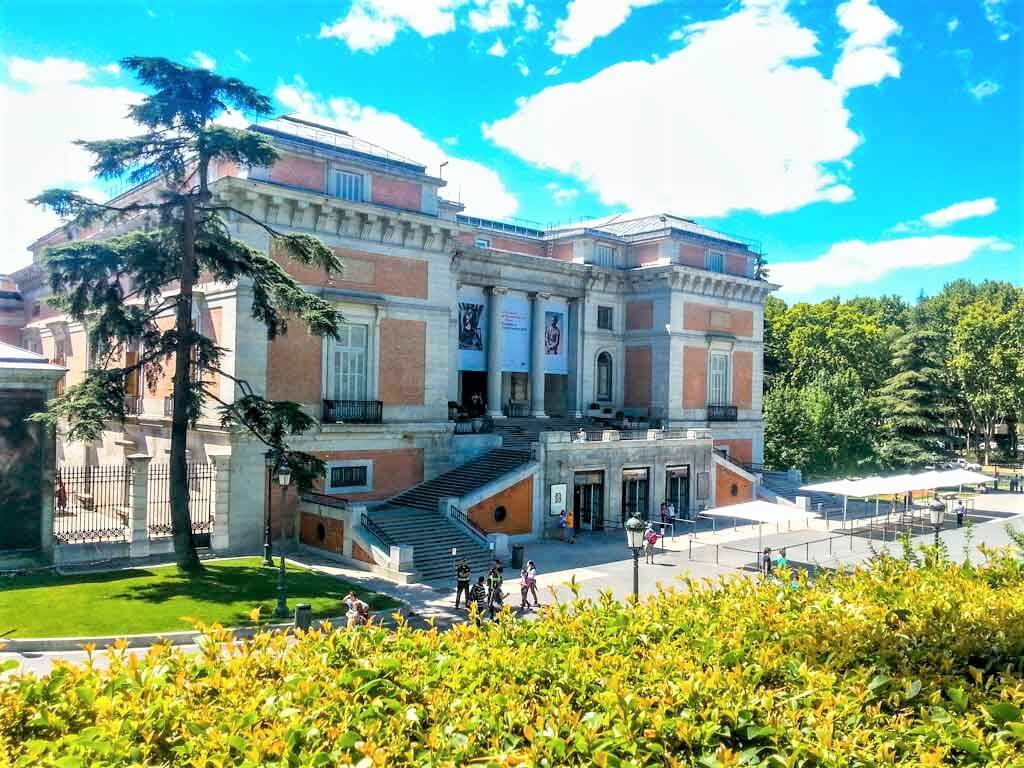
Madrid has a wide variety of accommodations in all price ranges from the budget Hostal Royal Cruz in Madrid to the high-end Hyatt
In Barcelona you’ll find the impressive National Art Museum of Catalonia, dedicated to regional artworks, though it’s also worth visiting the Picasso Museum and the Museum of Contemporary Art of Barcelona.
Going south, the city of Seville flaunts its Museum of Fine Arts, which includes pieces by El Greco, Goya, Zurbarán, and many others.
Continuing to the Basque Country in northern Spain, the city of Bilbao is home to the iconic Guggenheim Museum.
Not only does it house an extensive collection of modern and contemporary art but also has a unique building built in contemporary architectural style.
Many other cities and towns celebrate Spanish and European art, including Figueres with the quirky Dalí Theatre-Museum, Malaga with the Picasso Museum, Valencia with the Museum of Fine Arts, and Toledo with the El Greco Museum.
READ NEXT: Madrid, the capital of Spain is a wonderland of art, food , history, culture and more. Experience two days in Madrid without breaking the bank.
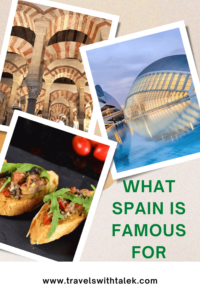
Pulpo a la gallega (Galician style octopus)
Sign up for a tapas tour in Spain and chances are you’ll experience pulpo a la gallega (Galician-style octopus). But wait, please don’t stop reading at the mention of ‘octopus.’
This outstanding traditional dish is delicious, like nothing you’ve ever experienced!
It was on a tapas tour in Barcelona that I first tasted this amazing delicacy.
We learned that pulpo a la gallega originated in the northwestern region of Galicia where pulpo (octopus) is a specialty, and a common catch for fishermen.
In fact, restaurants that serve or specialize in the dish are known as ‘pulperías.’
Thankfully, a person doesn’t need to travel to Galicia to experience it; pulpo a la gallega has become a popular tapa (appetizer) served throughout Spain.
It was in Mallorca several days after the tapas tour that we had a welcome opportunity to enjoy pulpo a la gallega once more.
We ordered several dishes from the menu at the Asador es Teatre restaurant in Ses Salines and the grilled octopus was voted the hands-down favourite. Yes, it’s THAT good!

Do you love bringing travel home to your kitchen by replicating dishes you’ve enjoyed elsewhere?
If so, pulpo a la gallega should be a strong contender because it’s surprisingly easy to make with just four ingredients: octopus, olive oil, paprika, and salt.
On your next visit to Spain, do yourself a favour and scan the menu in any restaurant for pulpo a la gallega. Buen provecho!
(If you’re fortunate enough to visit Galicia, look for ‘polbo à feira.’ Qué aproveite!)
READ NEXT: Best places to visit in Galicia, Spain, also the best place to sample pulpo a la gallega
Pueblos Blancos (the white-washed villages of Andalucia, southern Spain)
One of the things that makes Spain famous is the whitewashed villages of Andalucia called “Pueblos Blancos” in Spanish.
Most of these white villages are in the provinces of Cadiz and Malaga, however, it is not surprising to come across other white towns in other parts of Andalucia.
Going on a road trip around Andalucia is a fantastic experience as you can visit some of the most beautiful whitewashed towns.
Each town has something to offer apart from its beautiful whitewashed buildings, cobblestone streets and scenic views, as many of them are situated on the mountainside.
For example, depending on the town you visit, you can go to wineries, sample the traditional dishes of Spain, go on an olive oil tour or shop for unique ceramics and local products.
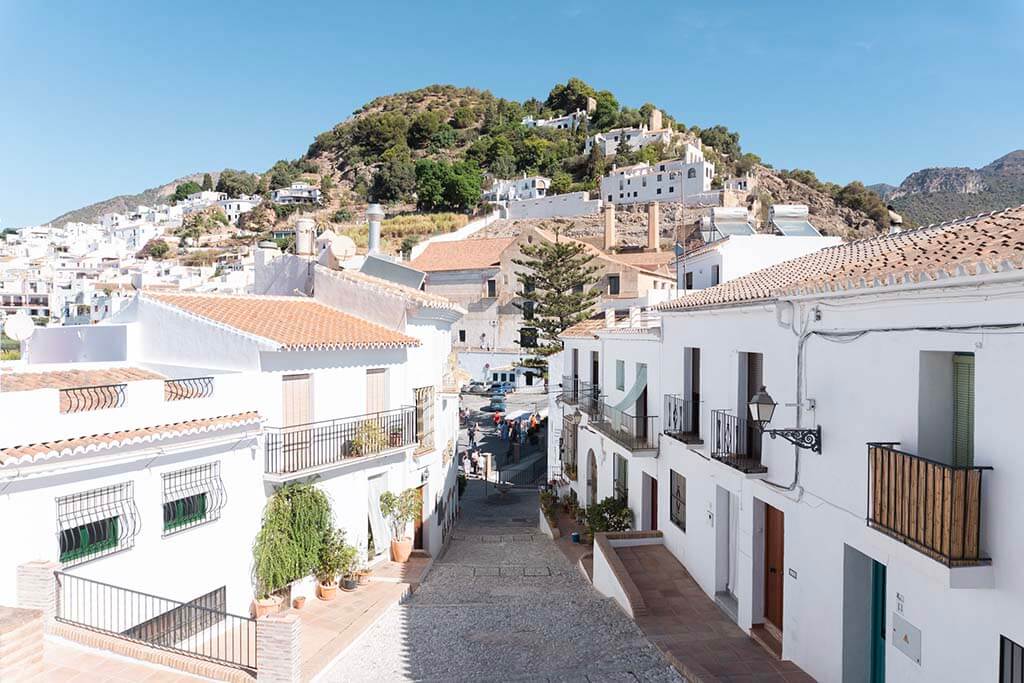
If you are in Malaga and the Costa del Sol area, don’t miss out on visiting the towns of Ronda, Casares and Frigiliana. The latter is considered one of the most beautiful towns in Spain.
If you are in Cadiz, you must visit Arcos de la Frontera, Olvera and Setenil de las Bodegas. Setenil is a one-of-a-kind village as parts of the village are built under cliffs.
Other whitewashed towns outside Malaga and Cadiz that are also worth visiting are Estepa (Seville), Mójacar (Almeria) and Trevélez (Granada).”
READ NEXT: The hidden gems in Spain, off-the-beaten-track
Real Alcazar de Sevilla
Spain is famous for its architecture. One of the country’s most iconic landmarks is the Real Alcázar of Seville, a palace and fortress that was named a UNESCO World Heritage Site in 1987.
This sprawling palace is the quintessential example of Mudéjar style, which combines Roman, Gothic, and Renaissance structural elements.
Put simply, the structure feels like an architectural quilt, with some areas offering distinct structural themes that are completely different from what you’ll see when you turn the corner.
The palace grounds contain sprawling gardens that stretch out in all directions. You can stroll the grounds in the Spanish sun, stopping periodically to watch as peacocks lazily peck at the ground.
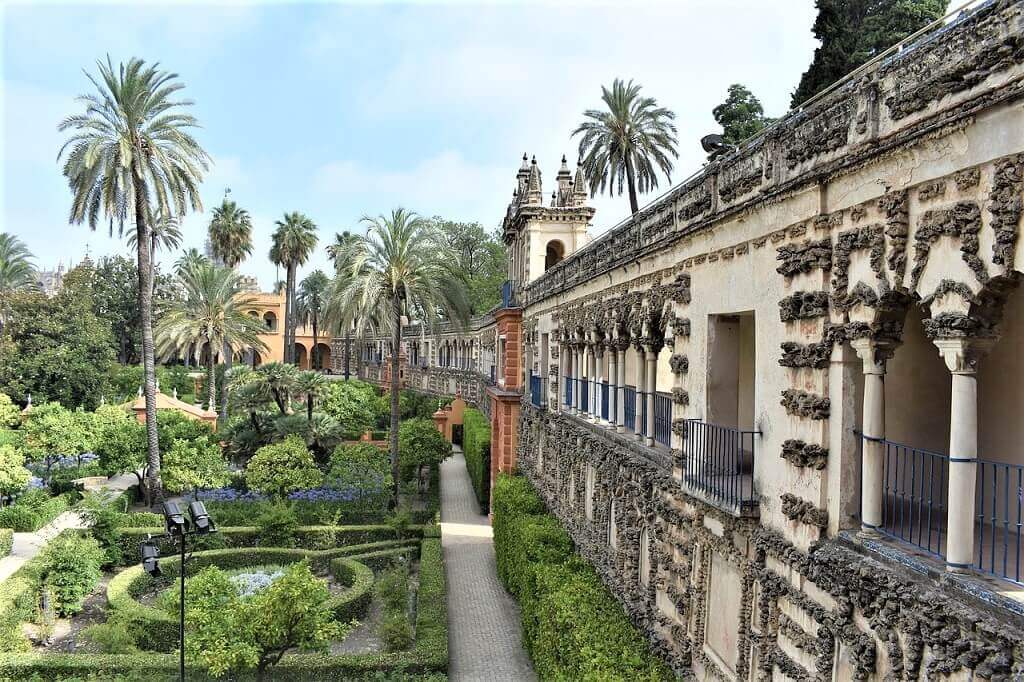
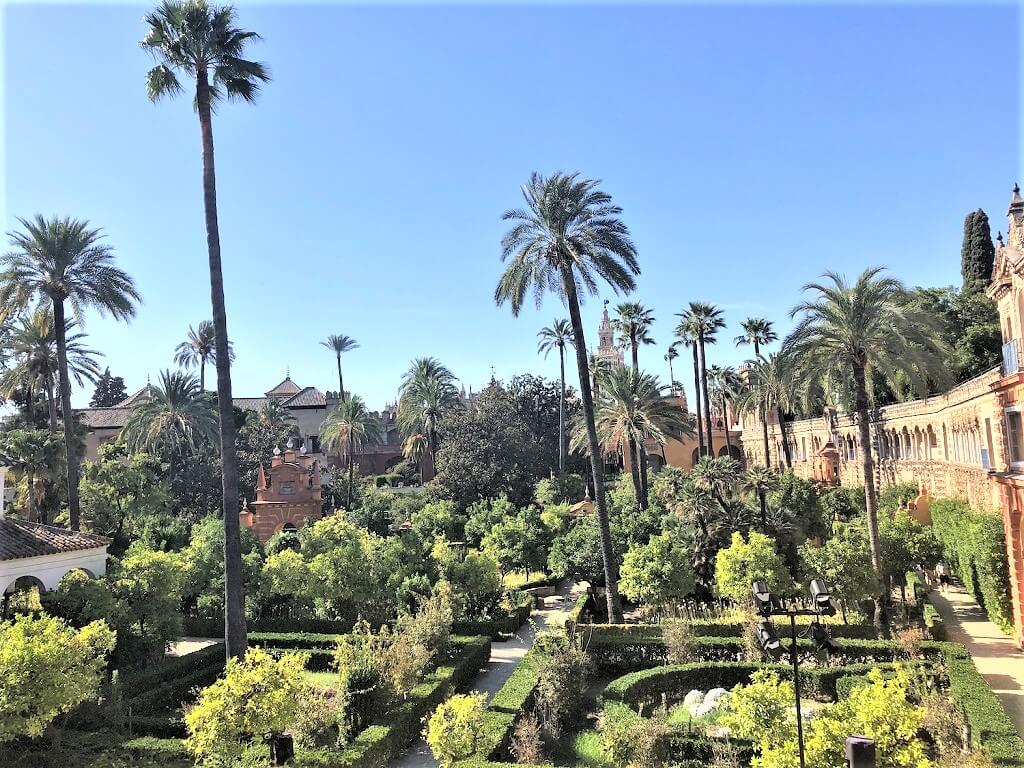
The Real Alcázar of Seville is also known for being a filming location for the hit TV show Game of Thrones. Some of the episodes were filmed throughout Seville, including at least one scene from within the palace grounds.
If you decide to go to this iconic Andalusian palace, be sure to visit as early in the day as possible.
This way, you’ll be able to beat both the crowds and the heat, especially during the summer months. Be sure to drink plenty of water and bring comfortable shoes.
As the Real Acázar is located within the city of Seville, you can really stay anywhere within the city when visiting.
The grounds are walkable from the city center, but there are public transit options as well if it feels a bit too far.
Other Seville accommodations here.
Gaudi’s Houses in Barcelona
Another thing that Spain is famous for is the many houses that Gaudi designed throughout the vibrant city of Barcelona.
For those who don’t know, Gaudi is the most well-known Catalan architect and is widely recognized for his immensely unique and creative designs.
One of the most iconic examples is Casa Batllo, which is located in the center of Barcelona.
This house features spectacular stained-glass windows and colorful ceramic tiles that are designed to resemble a dragon’s back.
Meanwhile, another house designed by Gaudí that visitors can view in Barcelona is Casa Milà.
This is a six-story building designed in the modernist style and displays a wavy facade with lots of ironwork.
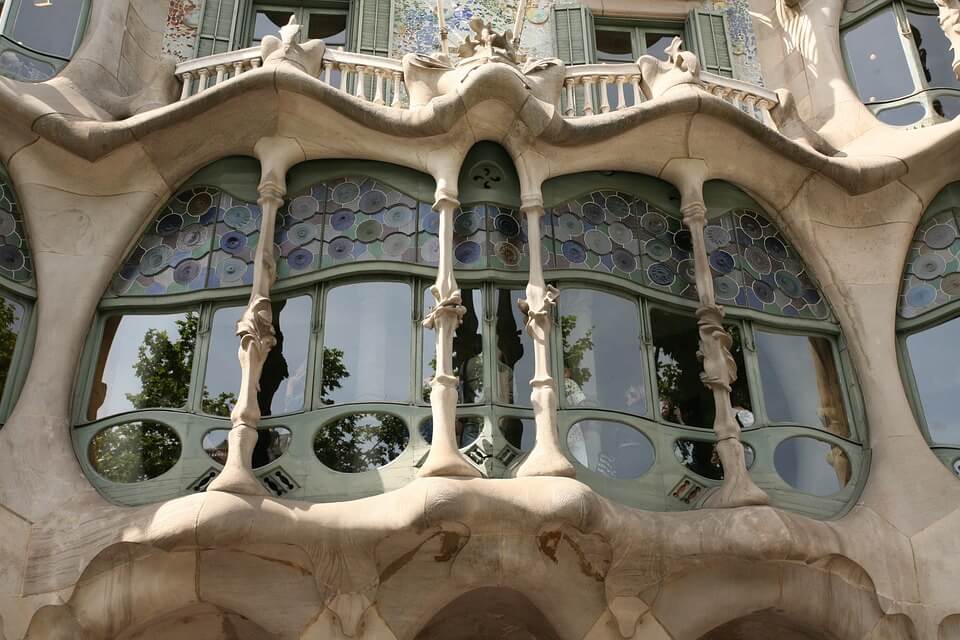
Both of these houses illustrate the inventive creativity of Gaudi and represent a small piece of what makes Spain such a popular destination to visit.
So for anyone visiting Barcelona, be sure to check out Gaudi’s houses.
They are a fantastic way to learn about the Catalan culture that is so heavily embraced in northeastern Spain, the small principality of Andorra, and other surrounding territories!
And, if you’re looking for places to stay within the city, check out Hotel Majestic. It’s a luxury hotel located within easy walking distance from Casa Batllo and Casa Mila!
Another hotel option is the fantastical Casa Fuster with Gaudi-esque designs
READ NEXT: Experience two days in Barcelona and never look back. For an epic Spanish experience, go an a northern Spain road trip from Barcelona to Santiago de Compostela
La Mezquita de Cordoba
La Mezquita is a breathtaking UNESCO World Heritage site located in Spain’s charming town of Cordoba. Located near famous historical towns such as Granada and Seville, traveling to Cordoba to visit La Mezquita is an easy day or night trip.
La Mezquita holds the honor as one of Andalucia’s three great monuments, and there are plenty of reasons why!
This remarable structure is an overwhelmingly beautiful Mosque-Cathedral built in the 16th century. Visitors can purchase tickets upon arrival at the ticket office, online in advance, or choose to visit on a free morning.
Seeing the monument at first glance begins the experience. Imagine golden bricks towering high into archways decorated with intricate Moorish design.
Once inside, walk beneath tall arches upon arches designed with red stripes. Historical artifacts are located throughout the building.
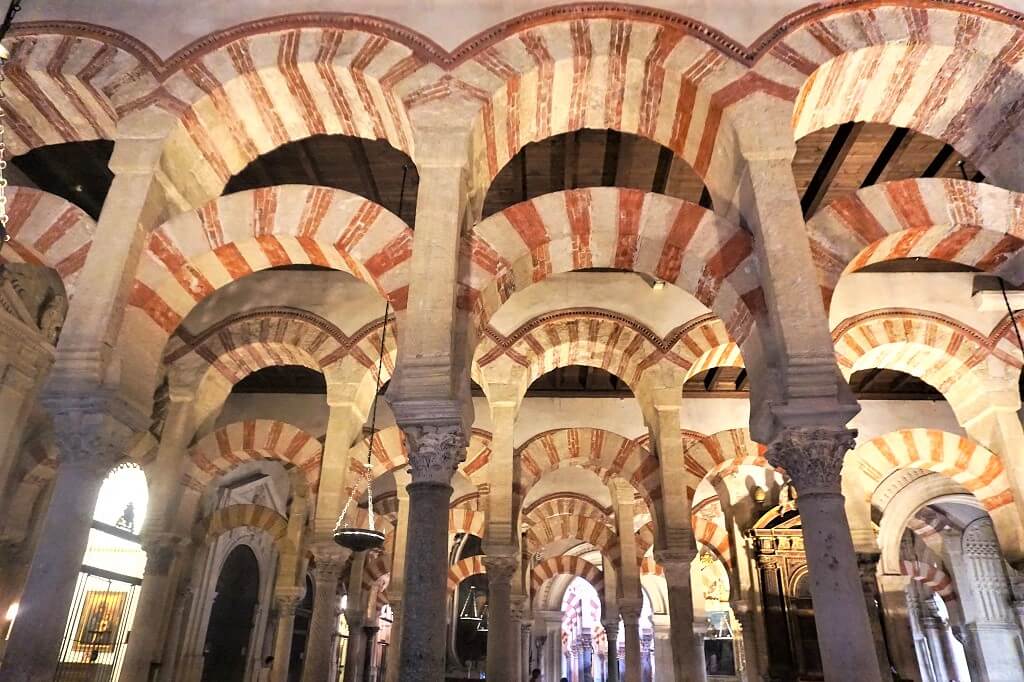
Oftentimes overshadowed by other spectacular monuments of the Southern Spain region such as Alhambra in Granada, there is no reason you can’t add a stop to the Mezquita too!
La Mezquita is only minutes away from the famous city gates leading across Cordoba’s historical Roman Bridge.
Walking distance from La Mezquita, visitors can stay at the 5 star Hotel Hospes Palacio del Bailio. This villa experience is complete with an outdoor pool and spa.
READ NEXT: Can’t get enough of southern Spain? Go on a southern Spain road trip along the Mediterranean
Canary Islands
Did you know that there is a Spanish paradise divided into 8 heterogeneous islands where you can always find summer vibes and awesome natural gems called the Canary islands?
You´ve probably heard about the beaches of Tenerife, the biggest island that houses Teide´s volcanic peak and the highest peak of Spain.
Gran Canaria and its beautiful golden Maspalomas’ dunes are the most famous and touristy islands of the archipelago.

La Gomera, a close neighbor of Tenerife (a boat trip away) is a perfect plan to spend a tropical weekend amongst the most amazing green postcards of all eight.
La Palma will also sound familiar, especially for being in the news due to the recent volcanic eruption that lasted 85 days and created the youngest land in Europe.
It’s one of the smallest islands but one of the most interesting and biodiverse ones to explore.
Another precious gem is El Hierro and its incredible seabed, considered one of the best in Europe for diving.
The 2011 submarine eruption of Tagoro volcano appears to have led to an explosion of life that you should check for yourself.
Finally, the 3 islands closest to the African coast: volcanic Lanzarote splattered with local artist Cesar Manrique’s architecture, trekking around Timanfaya volcanic complex, and enjoying volcanic wine are some of the few activities the island has to offer.
A day trip to La Graciosa, the small neighboring island, is also an amazing plan.
If your plan for vacation involves sunbathing and swimming in crystal clear beaches don’t miss Fuerteventura which is proud of having the best beaches in the Canary islands (you have more than 200 beaches on this island to choose from).
Where to stay in Gran Canaria.
READ NEXT: Gran Canaria, part of the Canary Islands, is all about history, nature and amazing food check it out. Learn about the 15 things to do in Gran Canaria.
Make sure to research this beautiful country of Spain before you go. These handy guidebooks will help you.
What are your thoughts on the many things Spain is famous for? What would you add? Let us know in the comments.


BTW, if you are getting ready for your trip, make sure to take advantage of these useful, money-saving links to book your trip:
- Research and book your flight with Skyscanner. I have found them to be the best because they list all airlines including the budget ones. You are always sure of having researched all options.
- For car rental around the world, Discover Cars has flexible pickup and drop-off options, I recommend Discover Cars.
- Book your accommodation with Booking.com. I find they have a wide selection and a nice, user-friendly, transparent website.
- Protect your trip and, more importantly, protect yourself with travel insurance. I use Travelinsurance.com and have been very happy with them.
- For more general tours to any destination or attraction, book with Viator. Check them out.
- Need a visa? Get your visa for all countries with Passport Visa Express.
- Looking for a cool walking tour to explore a city? My favorite walking tours are offered by Take Walks.
- Food and drink tours are the best way to enjoy a city. And Devour Tours are my favorite.
- Looking for a good VPN to protect your security, privacy and freedom online while traveling? Nordvpn is your best option.
- The best and most economical way to stay connected while traveling is with an Airalo eSIM.
I personally use, and can recommend, all the companies listed here and elsewhere on my blog. By booking through these sites, the small commission we earn – at no cost to you – helps us maintain this site so we can continue to offer our readers valuable travel tips and advice.



















2 Responses
Absolutely loved reading this roundup — it reminds me why I fell in love with living here in the first place! I live on a small finca near Málaga in Andalusia, so it’s extra special to see gems like the Pueblos Blancos and the Alhambra highlighted.
It’s so true that Spain is a country of contrasts. Even just here on the Costa del Sol, you can find everything from whitewashed villages like Frigiliana and Casares to modern cities, ancient ruins, and lively tapas bars. I’m always encouraging visitors to look beyond the beaches and explore the cultural side too — like flamenco under the stars in Ojén or a stroll through Ronda’s cliff-hanging gardens.
Thanks for putting together such an inspiring list — I’m already planning my next weekend trip to check a few more places off!
Thank you for your inspiring comments!